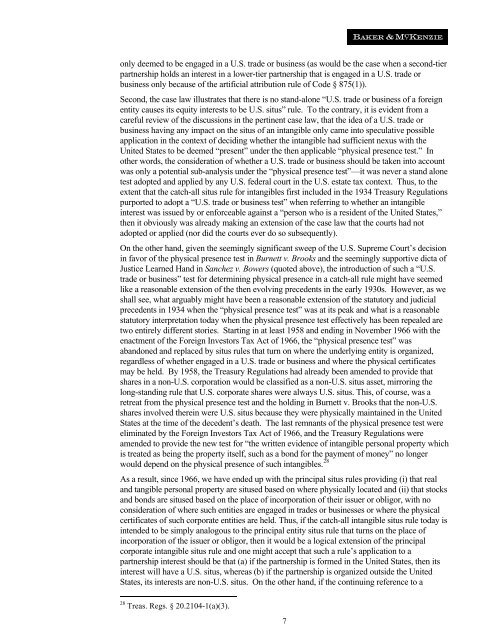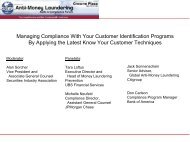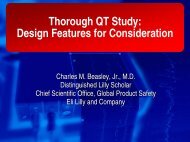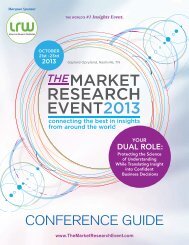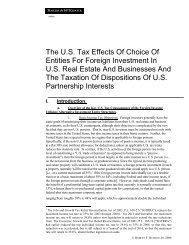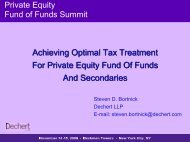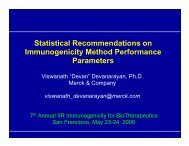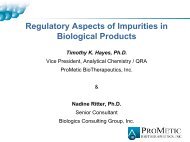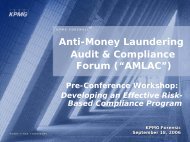The US Tax Effects Of Choice Of Entities For Foreign Investment - IIR
The US Tax Effects Of Choice Of Entities For Foreign Investment - IIR
The US Tax Effects Of Choice Of Entities For Foreign Investment - IIR
You also want an ePaper? Increase the reach of your titles
YUMPU automatically turns print PDFs into web optimized ePapers that Google loves.
only deemed to be engaged in a U.S. trade or business (as would be the case when a second-tier<br />
partnership holds an interest in a lower-tier partnership that is engaged in a U.S. trade or<br />
business only because of the artificial attribution rule of Code § 875(1)).<br />
Second, the case law illustrates that there is no stand-alone “U.S. trade or business of a foreign<br />
entity causes its equity interests to be U.S. situs” rule. To the contrary, it is evident from a<br />
careful review of the discussions in the pertinent case law, that the idea of a U.S. trade or<br />
business having any impact on the situs of an intangible only came into speculative possible<br />
application in the context of deciding whether the intangible had sufficient nexus with the<br />
United States to be deemed “present” under the then applicable “physical presence test.” In<br />
other words, the consideration of whether a U.S. trade or business should be taken into account<br />
was only a potential sub-analysis under the “physical presence test”—it was never a stand alone<br />
test adopted and applied by any U.S. federal court in the U.S. estate tax context. Thus, to the<br />
extent that the catch-all situs rule for intangibles first included in the 1934 Treasury Regulations<br />
purported to adopt a “U.S. trade or business test” when referring to whether an intangible<br />
interest was issued by or enforceable against a “person who is a resident of the United States,”<br />
then it obviously was already making an extension of the case law that the courts had not<br />
adopted or applied (nor did the courts ever do so subsequently).<br />
On the other hand, given the seemingly significant sweep of the U.S. Supreme Court’s decision<br />
in favor of the physical presence test in Burnett v. Brooks and the seemingly supportive dicta of<br />
Justice Learned Hand in Sanchez v. Bowers (quoted above), the introduction of such a “U.S.<br />
trade or business” test for determining physical presence in a catch-all rule might have seemed<br />
like a reasonable extension of the then evolving precedents in the early 1930s. However, as we<br />
shall see, what arguably might have been a reasonable extension of the statutory and judicial<br />
precedents in 1934 when the “physical presence test” was at its peak and what is a reasonable<br />
statutory interpretation today when the physical presence test effectively has been repealed are<br />
two entirely different stories. Starting in at least 1958 and ending in November 1966 with the<br />
enactment of the <strong>For</strong>eign Investors <strong>Tax</strong> Act of 1966, the “physical presence test” was<br />
abandoned and replaced by situs rules that turn on where the underlying entity is organized,<br />
regardless of whether engaged in a U.S. trade or business and where the physical certificates<br />
may be held. By 1958, the Treasury Regulations had already been amended to provide that<br />
shares in a non-U.S. corporation would be classified as a non-U.S. situs asset, mirroring the<br />
long-standing rule that U.S. corporate shares were always U.S. situs. This, of course, was a<br />
retreat from the physical presence test and the holding in Burnett v. Brooks that the non-U.S.<br />
shares involved therein were U.S. situs because they were physically maintained in the United<br />
States at the time of the decedent’s death. <strong>The</strong> last remnants of the physical presence test were<br />
eliminated by the <strong>For</strong>eign Investors <strong>Tax</strong> Act of 1966, and the Treasury Regulations were<br />
amended to provide the new test for “the written evidence of intangible personal property which<br />
is treated as being the property itself, such as a bond for the payment of money” no longer<br />
would depend on the physical presence of such intangibles. 28<br />
As a result, since 1966, we have ended up with the principal situs rules providing (i) that real<br />
and tangible personal property are sitused based on where physically located and (ii) that stocks<br />
and bonds are sitused based on the place of incorporation of their issuer or obligor, with no<br />
consideration of where such entities are engaged in trades or businesses or where the physical<br />
certificates of such corporate entities are held. Thus, if the catch-all intangible situs rule today is<br />
intended to be simply analogous to the principal entity situs rule that turns on the place of<br />
incorporation of the issuer or obligor, then it would be a logical extension of the principal<br />
corporate intangible situs rule and one might accept that such a rule’s application to a<br />
partnership interest should be that (a) if the partnership is formed in the United States, then its<br />
interest will have a U.S. situs, whereas (b) if the partnership is organized outside the United<br />
States, its interests are non-U.S. situs. On the other hand, if the continuing reference to a<br />
28 Treas. Regs. § 20.2104-1(a)(3).<br />
7


